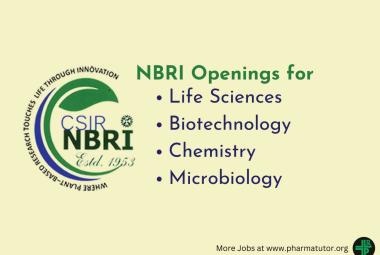About Authors:
Rathod Garuji*, G. Ganesh Kumar
Srikrupa Institute of Pharmaceutical Sciences,
Velikatta, Kondapak, Siddipet,
Dist: Medak.A.P.
*rathodpharma@gmail.com
ABSTRACT
Transdermal drug delivery is an alternative route for systemic drug delivery which minimizes the absorption and increases the bioavailability. Orally lornoxicam has a short elimination half-life (3-4 hrs.), low oral bioavailability undergoes extensive first pass metabolism and frequent high doses are required to maintain the therapeutic level as a result, dose development toxic effect. The purpose of this research work was to formulation and evaluation of lornoxicam transdermal patches using various polymers such as HPMC, Eudragit RL 100 and Eudragit RS 100 by solvent evaporation technique for improvement of bioavailability of drug and reducing toxic effects. The prepared formulations were evaluated for different physicochemical characteristics like thickness, folding endurance, drug content, percentage moisture absorption, percentage moisture loss and weight uniformity. Drug-excipient interaction studies were carried out using Fourier transform infrared (FTIR) spectroscopy technique.The diffusion studies were performed by using modified Franz diffusion cells. The result of diffusion study shows that formulation, F2 showed maximum release of 94.19 % in 24 h, whereas F5 showed minimum release of 51.59 % in 24 h. Based on the drug release and physicochemical values obtained the formulation F2 is considered as an optimized formulation which shows higher percentage of drug release of 94.19 % in 24 h. The developed transdermal patches increase the therapeutic efficacy and reduced toxic effect of lornoxicam.
REFERENCE ID: PHARMATUTOR-ART-1675
INTRODUCTION
A recent approach to drug delivery is to deliver the drug into systemic circulation at predetermined rate using skin as a site of application. Transdermal patches are delivered the drug through the skin in controlled and predetermined manner in order to increase the therapeutic efficacy of drug and reduced side effect of drug. Controlled drug release can be achieved by transdermal drug delivery systems (TDDS) which can deliver medicines via the skin portal to systemic circulation at a predetermined rate over a prolonged period of time. TDDS has gained a lot of interest during the last decade as it offers many advantages over the conventional dosage forms and oral controlled release delivery systems notably avoidance of hepatic first pass metabolism, less frequency of administration, reduction in gastrointestinal side effects and improves patient compliance.(1, 2)
Transdermal therapeutic systems are defined as a self contained, discrete dosage forms which, when applied to the intact skin, deliver the drug, through the skin at control rate to the systemic circulation. Transdermal formulation maintain drug concentration within the therapeutic window for prolong period of time ensuring that drug levels neither fall below the minimum effective concentration nor exceed the maximum effective concentration. An ideal drug to be formulated as transdermal drug delivery should possess several physico-chemical properties, such as short half life, small molecular size, low dose, low oral bioavailability, etc.3
Lornoxicam is an analgesic and anti-inflammatory agent, undergoes hepatic first pass metabolism and low oral bioavailability.4 Hence it is suitable for formulation as a transdermal patch. Drug molecules in contact with the skin surface can penetrate by three potential pathways: through the sweat ducts, via the hair follicles and sebaceous glands (collectively called the shunt or appendageal route), or directly across the stratum corneum.5
MATERIAL AND METHODS
Material
Lornoxicamwas obtained as a gift samples from Hetero Pharma Ltd.Hydroxyl Propyl Methyl Cellulose and were purchased from Dr. Reddy's Laboratories Ltd.Eudragit RL 100from Evonik Degussa Pvt Ltd. PEG 400, Tween 80, Dichloro methane, Methanol, Liquid Paraffinwere purchased from S.D Fine chemical Ltd. (Mumbai, India). All other laboratory chemicals used in the study were of analytical reagents grade.
Preparation of transdermal patch
Table 1: Composition of Formulations
|
Formulation Code |
F1 |
F2 |
F3 |
F4 |
F5 |
F6
|
F7 |
F8 |
F9 |
F10 |
|
Lornoxicam (mg/cm2) |
4 |
4 |
4 |
4 |
4 |
4 |
4 |
4 |
4 |
4 |
|
HPMC (mg) |
800 |
600 |
400 |
- |
15 |
8 |
6 |
400 |
200 |
600 |
|
Eudragit RL 100(mg) |
200 |
400 |
600 |
800 |
1000 |
- |
- |
- |
- |
200 |
|
Eudragit RS100 (mg) |
- |
- |
- |
- |
- |
200 |
400 |
600 |
800 |
200 |
|
PEG 400 (%) |
15 |
15 |
15 |
15 |
15 |
15 |
15 |
15 |
15 |
15 |
|
Tween 80 (%) |
8 |
8 |
8 |
8 |
8 |
8 |
8 |
8 |
8 |
8 |
|
DCM : Methanol1:1 (ml) |
6 |
6 |
6 |
6 |
6 |
6 |
6 |
6 |
6 |
6 |

Fig 1: Schematic representation of preparation of transdermal films
Physical characteristics of the prepared films
The following physical studies were conducted:
a. Physical appearance
b. Weight uniformity
c. Thickness uniformity
d. Drug content uniformity
e. Water vapor transmission studies
f. Folding Endurance
i) Physical Appearance
All the transdermal systems were visually inspected for colour, transparency, clarity, flexibility and smoothness.
ii) Weight uniformity
Weight variation is studied by individually weighing randomly selected patches and calculating the average weight. The individual weight should not deviate significantly from the average weight.
iii) Thickness uniformity
The thickness of transdermal film is determined by screw gauge at 5 different points of the film.The average of the five observations was calculated.
iv) Drug content uniformity
An accurately weighed portion of film (about 100 mg) is dissolved in 100 mL of suitable solvent in which drug is soluble and then the solution is shaken continuously for 24 h in shaker incubator. Then the whole solution is sonicated. After sonication and subsequent filtration, drug in solution is estimated spectrophotometrically by appropriate dilution.
v) Water vapour transmission (WVT) studies
For the determination of WVT, Rao et al., (1997) weighed one gram of calcium chloride and placed it in previously dried empty vials having equal diameter. The polymer films were pasted over the brim with the help of adhesive like silicon adhesive grease and the adhesive was allowed to set for 5 minutes. Then, the vials were accurately weighed and placed in humidity chamber maintained at 68 % RH. The vials were again weighed at the end of every 1st hr, 2nd hr, 3rd hr up to a period of 24 hrs and an increase in weight was considered as a quantitative measure of moisture transmitted through the patch5.
WVT = W/ ST
Where W is the increase in weight in 24 h
S is area of film exposed (cm2)
T is exposure time.
vi) Folding Endurance
Evaluation of folding endurance involves determining the folding capacity of the films subjected to frequent extreme conditions of folding. Folding endurance is determined by repeatedly folding the film at the same place until it break. The number of times the films could be folded at the same place without breaking is folding endurance value. This is important to check the ability of sample to withstand folding. This also gives an indication of brittleness7.
In-vitrodrug permeation
The amount of drug available for absorption to the systemic pool is greatly dependent on drug released from the polymeric transdermal films. The drug reached at skin surface is then passed to the dermal microcirculation by penetration through cells of epidermis, between the cells of epidermis through skin appendages.
Usually permeation studies are performed by placing the fabricated transdermal patch with rat skin or synthetic membrane in between receptor and donor compartment in a vertical diffusion cell such as Franz diffusion cell or keshary-chien diffusion cell. The transdermal system is applied to the hydrophilic side of the membrane and then mounted in the diffusion cell with lipophillic side in contact with receptor fluid i.e., buffer. The whole assembly is kept on magnetic stirrer and solution in the receiver compartment is constantly and continuously stirred throughout the experiment using magnetic beads8.

Fig 2: Franz diffusion cell
The pH of the dissolution medium ideally should be adjusted to pH 5 to 6, reflecting physiological skin conditions. For the same reason, the test temperature is typically set at 32°C (even though the temperature may be higher when skin is covered).
Ph Eur considers 100 rpm a typical agitation rate and also allows for testing an aliquot patch section. The agitation speed and temperature are kept constant.
This may be an appropriate means of attaining sink conditions, provided that cutting a piece of the patch is validated to have no impact on the release mechanism.[112]
The samples are withdrawn at predetermined time intervals and equal amount of fresh receptor fluid is replaced each time. The samples are diluted appropriately and absorbance is determined spectrophotometrically.
Design of system, patch size, surface area of skin, thickness of skin and temperature etc. are some variables that may affect the release of drug. [43]
RESULT AND DISCUSSION
In the present work efforts have been made to prepare transdermal drug delivery system of lornoxicam using the polymers HPMC, Eudragit RL 100 and Eudragit RS 100, using polyethylene glycol as a plasticizer by solvent casting technique. The selection of polymer combinations produces clear, smooth, uniform, substantive, flexible and desired thickness film for the transdermal drug delivery systems of lornoxicam. The prepared formulation were evaluated for different Physico-chemical characteristics such as Thickness, Folding endurance, Drug Content, Percent moisture absorption, Percentage moisture loss and Weight uniformity. The release characteristics of the formulation were studied in in vitro conditions. In vitro dissolution studies were carried out in phosphate buffer (pH 7.4) for 24 hours. It is given in table No: 2
Table 2: Data obtained from physico-chemical evaluation
|
FC |
Weight uniformity (mg)
|
Thickness uniformity (mm) |
Drug content uniformity (%) |
WVT (gcm/cm2.24h) |
Folding Endurance |
|
F1 |
122±1.79 |
0.17±0.0020 |
97.86±4.2 |
5.91±0.059 |
270±4.32 |
|
F2 |
135.6±1.75 |
0.20±0.0035 |
97.91±1.7 |
6.70±0.052 |
261±3.00 |
|
F3 |
140.2±2.35 |
0.25±0.0060 |
97.1±2.5 |
6.65±0.030 |
250±5.21 |
|
F4 |
148.5±2.51 |
0.2±0.0025 |
98.95±4.1 |
6.45±0.026 |
249±3.87 |
|
F5 |
150±1.31 |
0.4±0.0024 |
98.4±3.4 |
6.25±0.029 |
246±4.60 |
|
F6 |
100±1.91 |
0.2±0.0041 |
96.85±3.5 |
5.99±0.038 |
316±4.15 |
|
F7 |
125±2.39 |
0.17±0.0032 |
97.5±4.9 |
5.93±0.023 |
309±3.89 |
|
F8 |
131.5±2.15 |
0.22±0.0023 |
98.65±2.5 |
5.57±0.049 |
297±5.10 |
|
F9 |
136.8±1.85 |
0.1±0.0042 |
98.79±1.7 |
5.19±0.035 |
293±5.15 |
|
F10 |
137.2±1.20 |
0.31±0.0035 |
98.65±2.6 |
4.90±0.05 |
290±4.72 |

Fig 3: Plot of Cumulative % drug release of all the formulations
Conclusion
Successful transdermal drug application requires numerous considerations. Bearing in mind that the basic functions of the skin are protection and containment, it would seem exceptionally difficult to target the skin for drug delivery. However, with our greater understanding of the structure and function of the skin, and how to alter these properties, more and more new drug products are being developed for transdermal delivery. The properties of the drug, the characteristics of the transdermal device, selection of in-vivo model and the status of patient’s skin are all important for safe and effective drug delivery.
- Currently,Lornoximis a proved drug substance for its great clinical potential.
- In the present study, attempts were made to prepare and evaluate the transdermal films containing Lornoxicam, an NSAID drug using ERL 100, ERS 100 and HPMC E5.
- In the pre-formulation studies, solubility, partition coefficient, and melting point were determined to assess its application for transdermal delivery.
- The transdermal films were evaluated for their, appearance, weight uniformity, thickness uniformity, FTIR, water vapor transmission, drug content uniformity and stability studies. All the patches were, thin, smooth and flexible, uniformity in drug content, weight and thickness were observed with their low SD values.
- In-vitro drug permeation through dialysis membrane was performed using Franz diffusion cells. The F2 formulation showed maximum permeation at the end of 24 hrs.
- The drug release was extended for 24 hrs depending upon the formulation variables. The release mechanism from all membrane controlled systems followed diffusion mechanism was best fit to Higuchi model.
References
1. Chein YW. Novel Drug Delivery Systems. 2nd ed. New York: Marcel Dekker; 1992; 1-2.
2. Tyle P. Drug Delivery Devices. Fundamentals and Applications. New York:Marcel Dekker; 1998; 385-417.
3. Desai BG, Annamalai AR, Divya B, Dinesh BM. Effect of enhancers on permeation kinetics of captopril for transdermal system. Asian J Pharm 2008; 2: 35-7.
4. Langer R. Transdermal drug delivery: past progress, current status and future prospects. Adv Drug Del Rev 2004; 56(5): 557-8.
5. Pathan IB, Setty CM. Chemical penetration enhancers for transdermal drug delivery systems. Trop J Pharm Res 2009;8(2): 173-9.
6. Benson HAE., Transdermal drug delivery: Penetration enhancement techniques. Curr Drug Deliv 2005;(2): 23-33.
7. Kanikkannan N, Kandimalla K, Lamba SS, Singh M. Structure-activity Relationship of chemical penetration enhancers in transdermal drug delivery.Curr Med Chem 2000;7: 593, 608.
8. Barry BW. Drug delivery routes in skin: a novel approach. Adv Drug Deliv Rev2002; 54:s31-s40.
9. Misra AN. Transdermal drug delivery. In: Jain NK, editor. Controlled and novel drug delivery. New Delhi: CBS Publishers and Distributors; 2004. 101-17.
10. Aulton ME. Pharmaceutics: The science of dosage form design. 2nd ed. London:Churchill Livingstone; 2002. 499-533.
11. Tiwary, Ashok KS, Bharti; Jain, Subheet. Innovations in Transdermal Drug Delivery: Formulations and Techniques. Recent Patents on Drug Delivery & Formulation. 2007; 1(1): 23-36.
12. Kaestli LZ, Wasilewski-Rasca AF, Bonnabry P, Vogt-Ferrier N.Use of transdermal drug formulations in the elderly.Drugs Aging. 2008; 25(4): 269-80.
13. Rao PR, Diwan PY. Permeability studies of cellulose acetate free films for transdermal use: Influence of plasticizers.Pharm Acta Helv. 1997; 72: 47-51.
14. Deo MR et al. Proliposome-based Transdermal delivery of levonorgestrel. Jour. Biomat. Appl. 1997; 12: 77-88.
15. Yan-yu X, Yun- mei S, Zhi-Peng C and Qi-nerg P. Preparation of Silymarin Proliposomes; A new way to increase oral Bioavailability of Silymarin in Beagle dogs. Int. pharm. 2006; 319: 162-168.
16. Wiechers J. Use of Chemical Penetration enhancers in Transdermal Drug Delivery possibilities and Difficulties. Acta pharm. 1992; 4:123.
NOW YOU CAN ALSO PUBLISH YOUR ARTICLE ONLINE.
SUBMIT YOUR ARTICLE/PROJECT AT articles@pharmatutor.org
FIND OUT MORE ARTICLES AT OUR DATABASE









